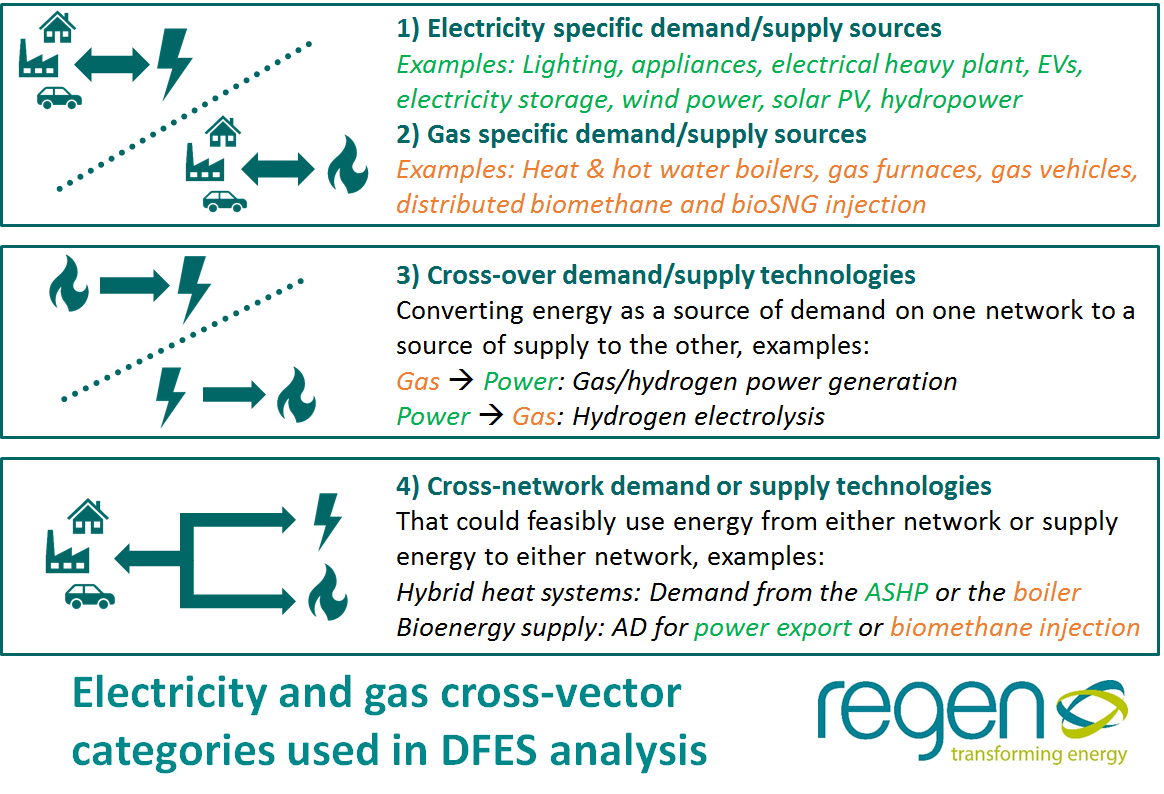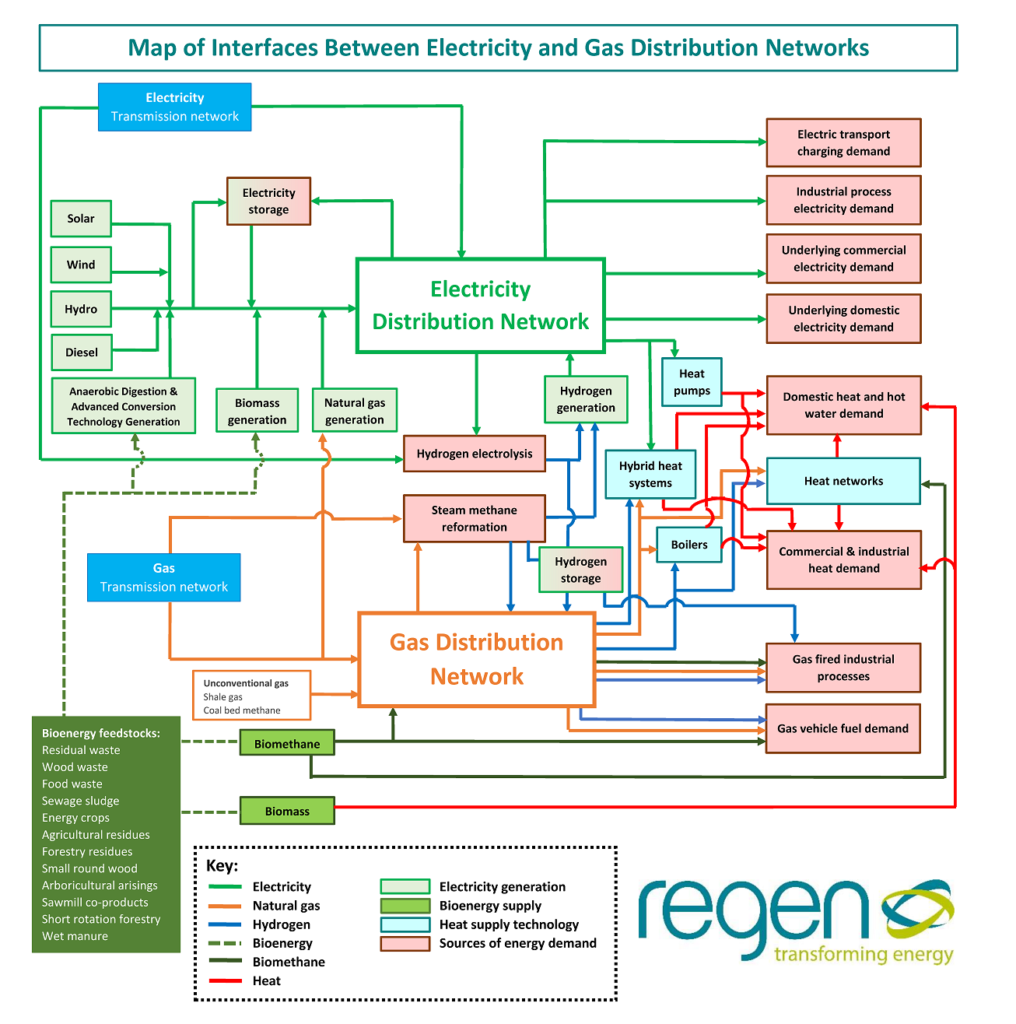 Ray Arrell, head of technical development, highlights some of the cross-vector thinking in Regen’s future energy scenarios work, identifying some of the interfaces between electricity and gas distribution networks.
Ray Arrell, head of technical development, highlights some of the cross-vector thinking in Regen’s future energy scenarios work, identifying some of the interfaces between electricity and gas distribution networks.
Our energy networks are the backbone to our energy system, delivering energy from where it is generated to where it is consumed. In order to meet our net zero obligations, the UK’s network operators will need to understand what transformational changes in both energy supply and use will happen in the future, when these changes might happen and how they will impact their local networks. At its heart, an efficient and effective net zero energy system will turn to sources of flexibility, adapting to the more dynamic end use and decentralised supply of energy that we will see in the future. Our energy networks will need to work together to develop a shared understanding of this future energy system, coordinating long term investment planning and exploiting the potentially significant benefits of whole energy system approaches.
Regen has mapped what a whole energy system view of supply and demand might look like, from the perspective of the electricity and gas distribution networks. Showing the various supply and demand elements and technologies on both networks and demonstrates how and where these may interface:
This enabled the various elements of the analysis (e.g. sources of energy demand, supply technologies etc.) to be grouped into four key categories:

Understanding these different categories of energy elements highlights that electricity and gas distribution networks already interact in some areas under all net zero future scenarios. There will also likely be more instances of cross-over and cross-network interfacing between the two networks. This is only one aspect of whole energy system thinking that Regen is seeking to explore with the networks and other key actors in the wider energy system.
As part of this thinking, Regen has been working on a Network Innovation Allowance (NIA) funded project to combine and extend existing Distribution Future Energy Scenario (DFES) assessments that were delivered for Western Power Distribution (WPD) and Wales and West Utilities (WWU) in South Wales. The project – Net Zero South Wales – sought to extend the existing assessments out to 2050, assessing all key sources of energy demand and distributed supply under three net zero scenario pathways. Regen launched the results of the assessment via a webinar on the 17 June, highlighting what the pathways may look like for reaching net zero carbon energy on the distribution networks in South Wales and outlining some of the key learnings from this as an innovation project with two regional network operators.

